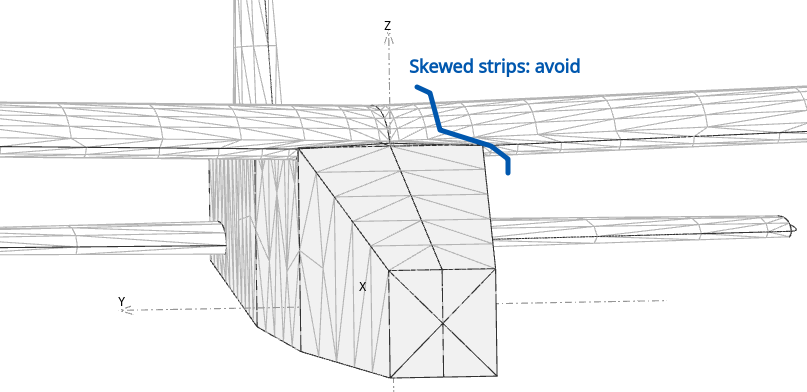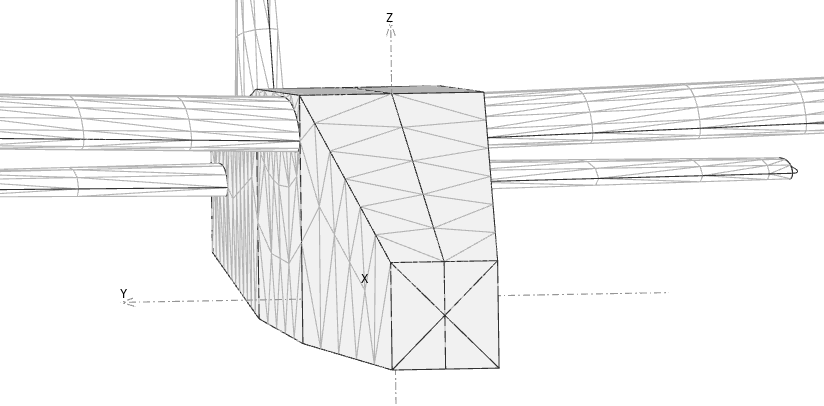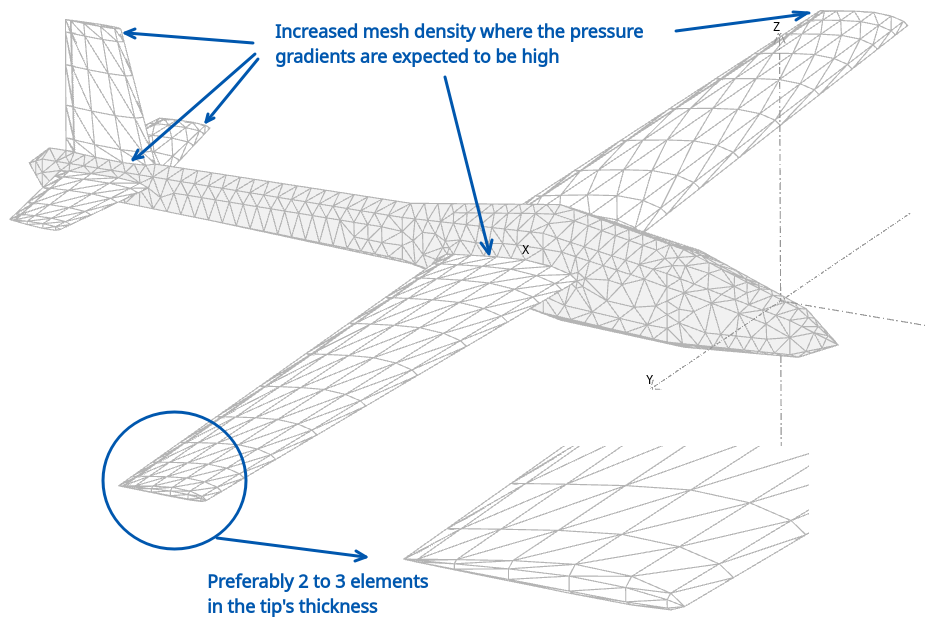
Modelling - design principles and recommendations
Updated September 23rd, 2020
------------------ WORK IN PROGRESS ------------------
Wing strips
A key building block of the panel analysis method is the wing streamwise strip. The strip is used to calculate the wing's lift, which is deduced from the flow's circulation around the strip, and to calculate the viscous drag by interpolation of XFoil viscous results.
A strip goes from the trailing edge to the leading edge in the case of thin surfaces, and back to the trailing edge in the case of thick surfaces.
For the circulation around the strip to have some sense in the case of thick surfaces, it is therefore important that the top and bottom trailing edges are in the same plane perpendicular to the surface, and this is the way that the strips are constructed by default in the case of isolated wings.
A strip goes from the trailing edge to the leading edge in the case of thin surfaces, and back to the trailing edge in the case of thick surfaces.
For the circulation around the strip to have some sense in the case of thick surfaces, it is therefore important that the top and bottom trailing edges are in the same plane perpendicular to the surface, and this is the way that the strips are constructed by default in the case of isolated wings.

A fuselage however can cause the unwanted effect to skew the strips, and this should be avoided as much as possible.

In such a case, it is highly recommended to modify the fuselage so that it intersects the whole of the wing's thickness: this will cause the top and bottom panels of the strips to be in the same streamwise plane.

Back to top
Panel bunching
As a general rule, the panel density should be greater where the pressure gradients are expected to be high.
Typical locations can be:
- the extremities of the wing, i.e. the leading and trailing edges, the outside tips, and the inner section where it connects to the fuselage.
- sections with larg change of dihedral angle, i.e. where the winglets connect to the wing
- location where the elevator meets the fin
- the fuselage nose and tip
